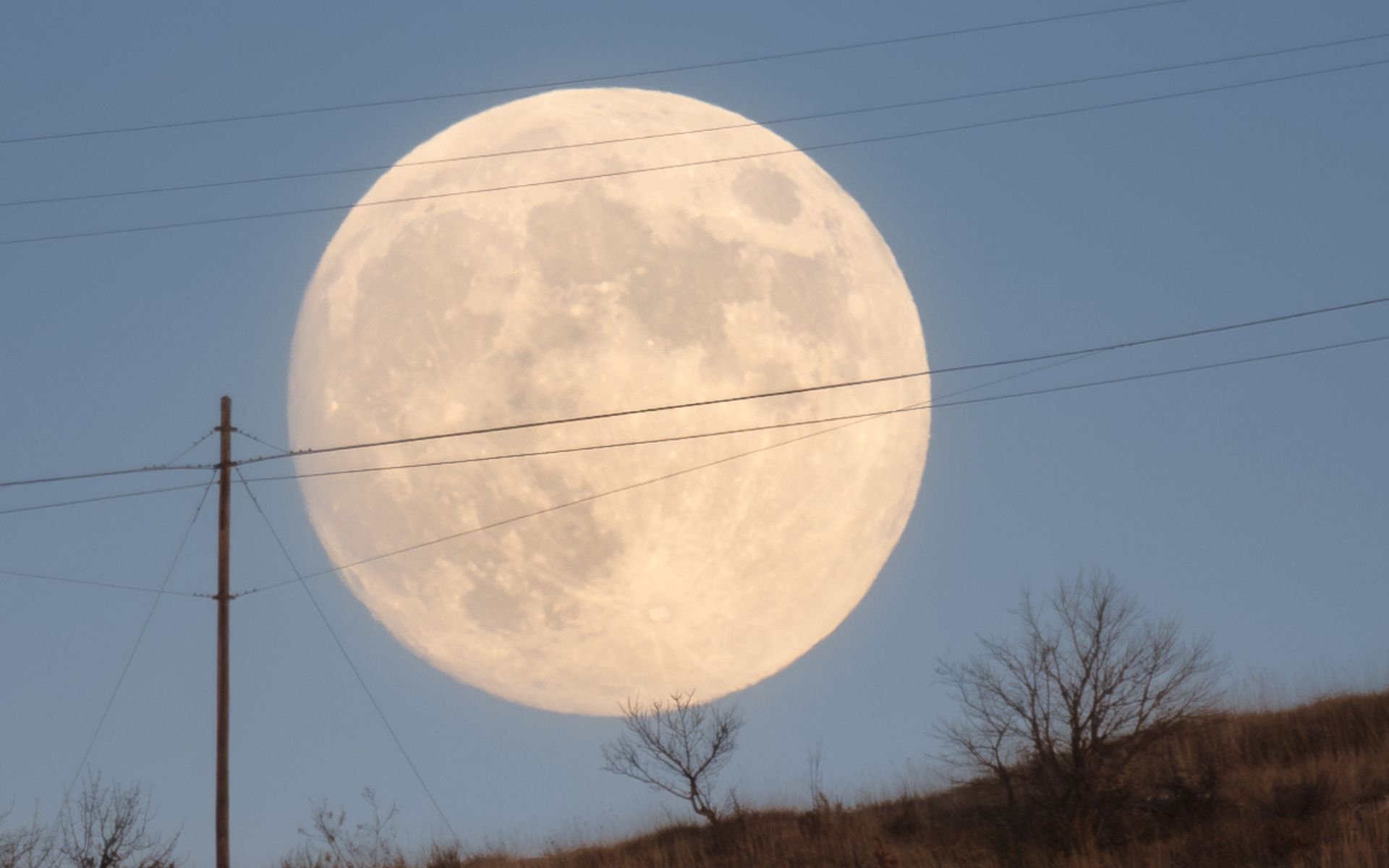During the lunar cycle, The moon goes through different phases including new moon, waxing moon, waning moon and full moon. Due to this cycle, the cosmic body can be observed with a different shape from the Earth, but always with its characteristic white and yellowish glow. However, since the natural satellite operates through a phenomenon called synchronous rotation, there is only one side of the ‘dark side of the Moon’.
Observing the Moon in the night sky is an ancient practice dating back to the beginning of humanity. This phenomenon is so great that many religions have developed mythologies around the Moon to explain its presence in the universe. However, it is not only at night that the natural satellite fascinates people. Some wonder how the object can be so bright and visible in the sky during the day.
A while ago, a conspiracy theorist named Stew Peters started wondering what the Moon might look like during the day. The question made other internet users think about the subject; They believe that this is not a completely natural phenomenon and that the Moon’s daytime brightness can only be caused by something ‘artificial’. Fortunately, they are wrong.
“I’ve been noticing this for a few years. I walk three times a day and in the morning and until the evening I always see the moon on one side and the sun on the other. Something very artificial is happening here. A follower of the conspiracy theorist said, “The sun is no longer white, not yellow like it was in our childhood. The moon shines like a lantern, it doesn’t look real. We must question what is happening to our skies.” X (formerly Twitter).
TecMundo gathered information from scientists and experts in the field to explain a little better why we can see the moon during the day. Check out!
Why can we see the Moon during the day?
A simple explanation for why we cannot see the Moon, planets and stars with the naked eye during the day is that the sky is much brighter because of the Sun. It can be observed in the daytime sky for several hours, depending on the phase of the natural satellite..
The fact is that we cannot always observe the Moon during the day, but in some cases we can see the natural satellite despite the strong daytime illumination of the Sun. This is mainly due to the Earth’s atmosphere and the orbital cycle of our planet. After all, if the Earth did not create any atmosphere, the bright Moon would always be visible.
Gas particles in the atmosphere cause our sky to appear blue and purple during the day, so the Moon must be brighter than the scattered light from the Sun to be observed. For example, during the new moon period, the Moon should be brighter. It is between the Sun and the Earth. Well, The shining side of the moon will face the opposite side of the planet; The light will continue to shine in the sky, but will be reflected on the opposite side of where we are.
Two extremely important points are needed to better see the Moon in the daytime sky. The first is that the brightness of the cosmic object is strong enough to pierce the blue sky in the scattered light of the Sun, and the second is that the Moon is high enough to be observed.
Because the Earth is constantly rotating, the Moon remains above the planet’s horizon for approximately 12 hours during each full day. During some of these hours, up to six hours, the satellite remains visible in the daytime sky.. However, since the Sun’s light is extremely strong in some cases, the Moon may not always be noticeable; but that doesn’t mean the Moon isn’t there.
“Let’s think about why we can see the Moon at night. The Moon, unlike our Sun, does not create its own light. We can only see it because the Sun’s light is reflected from its surface. The same thing happens during the day, and unlike stars that are still there during the day but we can’t see them because the sky is too bright, the Moon actually shines bright enough to be seen day or night as long as it’s inside. the right part of the sky,” explains the US National Aeronautics and Space Administration (NASA).
When the moon is in a crescent or half-moon phase, observers can see it better during the day. This is because during these periods the Moon is farthest from the Sun and at a given location it is approximately 90 degrees away from the star.
The best time to observe the Moon during the day is around the first through fourth waning periods, when it will be 90 degrees away from the Sun. In fact, the Moon is partially visible during the day almost every day except the new and new Moon. fully loaded.
Did you like the content? So, follow all the curiosities about physics at TecMundo. If you wish, have the opportunity to understand how a day would last 65 hours if the Sun did not affect the Earth’s rotation.
Source: Tec Mundo
I’m Blaine Morgan, an experienced journalist and writer with over 8 years of experience in the tech industry. My expertise lies in writing about technology news and trends, covering everything from cutting-edge gadgets to emerging software developments. I’ve written for several leading publications including Gadget Onus where I am an author.












